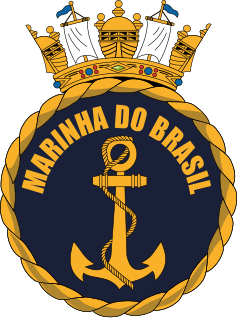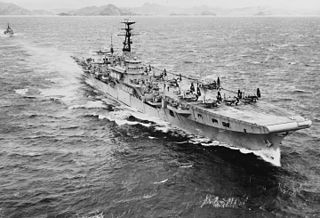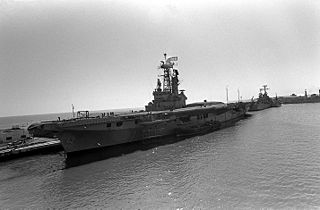This article needs additional citations for verification .(July 2012) (Learn how and when to remove this template message) |
 | |
| History | |
|---|---|
| Name: | Foch |
| Ordered: | 1955 |
| Laid down: | 15 November 1957 |
| Launched: | 23 July 1960 |
| Commissioned: | 15 July 1963 |
| Decommissioned: | 15 November 2000 |
| Identification: | Pennant number: R99 |
| Fate: | Sold to the Brazilian Navy |
| Name: | São Paulo |
| Namesake: | State of São Paulo |
| Launched: | 1960 by France |
| Acquired: | September 2000 |
| Commissioned: | 15 November 2000 |
| Decommissioned: | 22 November 2018 |
| Out of service: | 14 February 2017 |
| Struck: | 22 November 2018 |
| Identification: |
|
| Status: | Awaiting disposal [1] |
| Notes: | see Foch (R99) for prior history |
| Badge: |  |
| General characteristics | |
| Class and type: | Clemenceau-class aircraft carrier |
| Displacement: |
|
| Length: | 265 m (869 ft 5 in) |
| Beam: | 31.7 m (104 ft 0 in) |
| Draught: | 8.60 m (28 ft 3 in) |
| Propulsion: | 6 Indret boilers, 4 steam turbines producing 126,000 hp (94,000 kW), 2 propellers |
| Speed: | 32 knots (59 km/h) |
| Range: | 7,500 nautical miles (13,900 km) at 18 knots (33 km/h; 21 mph) |
| Complement: | 1,338 (1,920 including the air group). 984 if only helicopters are carried. |
| Electronic warfare & decoys: |
|
| Armament: | four 100 mm turrets, two SACP Crotale EDIR systems, five 12.7 mm machine guns, 4 dual Simbad launchers |
| Aircraft carried: | 39 aircraft: 22 jets and 17 helicopters. [2] A-4KU Skyhawks, AS 532 SC Cougars, HB 350 & HB.355 Ecureuils, and SH-3 Sea Kings |
NAe [lower-alpha 1] São Paulo was a Clemenceau-class aircraft carrier in service with the Brazilian Navy. São Paulo was first commissioned in 1963 by the French Navy as Foch and was transferred in 2000 to Brazil, where she became the new flagship of the Brazilian Navy. IHS Jane's reported that during its career with the Brazilian Navy, São Paulo suffered from serviceability issues and never managed to operate for more than three months at a time without the need for repairs and maintenance. [3] On 14 February 2017, the navy announced the ship's demobilisation and subsequent decommissioning. [1]

The Clemenceau-class aircraft carriers are a pair of aircraft carriers which served in the French Navy from 1961 until 2000. From 2000 until 2017 one served with the Brazilian Navy as São Paulo. The Clemenceau class was France's first successful aircraft carrier design after World War II and was the backbone of the French Fleet for the duration of its forty years of service.

An aircraft carrier is a warship that serves as a seagoing airbase, equipped with a full-length flight deck and facilities for carrying, arming, deploying, and recovering aircraft. Typically, it is the capital ship of a fleet, as it allows a naval force to project air power worldwide without depending on local bases for staging aircraft operations. Carriers have evolved since their inception in the early twentieth century from wooden vessels used to deploy balloons to nuclear-powered warships that carry numerous fighters, strike aircraft, helicopters, and other types of aircraft. While heavier aircraft such as fixed-wing gunships and bombers have been launched from aircraft carriers, it is currently not possible to land them. By its diplomatic and tactical power, its mobility, its autonomy and the variety of its means, the aircraft carrier is often the centerpiece of modern combat fleets. Tactically or even strategically, it replaced the battleship in the role of flagship of a fleet. One of its great advantages is that, by sailing in international waters, it does not interfere with any territorial sovereignty and thus obviates the need for overflight authorizations from third party countries, reduce the times and transit distances of aircraft and therefore significantly increase the time of availability on the combat zone.

The Brazilian Navy is the naval service branch of the Brazilian Armed Forces, responsible for conducting naval operations. The Brazilian Navy is the largest navy in South America and in Latin America, and the second largest navy in the Americas, after the United States Navy.






























